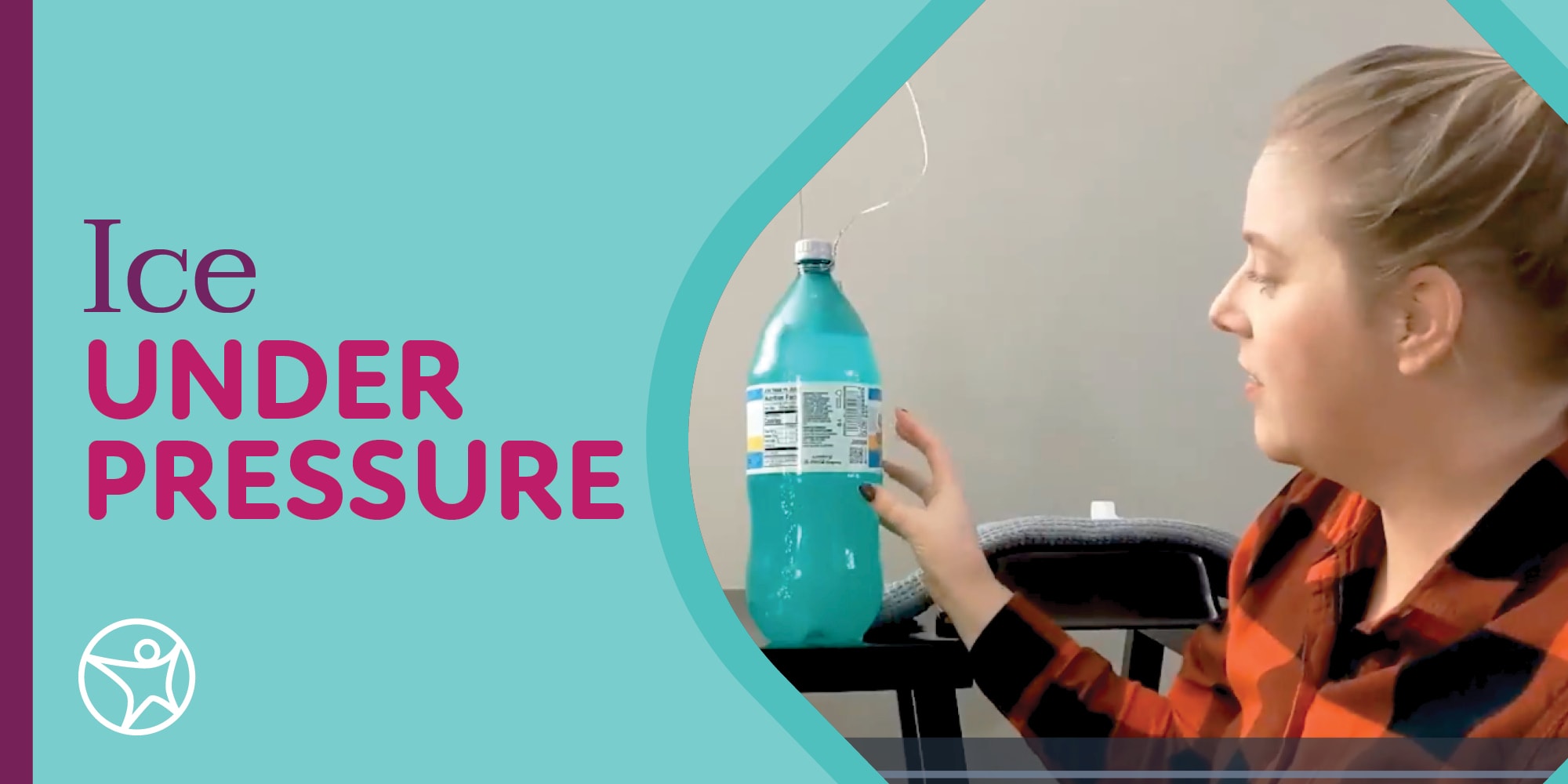All About Connections Academy’s Online Chess Club
by Valerie Kirk
byBob Engler
5 min to readScientific inquiries often start with: “What will happen if … ?”
"Ice Under Pressure" is a fun, hands-on way to involve young learners in basic chemistry principles, inspire them to think like scientists, and develop their reasoning and critical-thinking skills.
It takes only a few household items and a couple of minutes to complete, but ends with a twist that may be surprising. First, your little scientist needs to ask themselves:
What will happen if you put a weighted-down wire on an ice cube?
"Ice Under Pressure" is an exercise in inquiry-based learning, an approach that develops critical- and creative-thinking skills by encouraging learners to ask questions and work through problems to find answers on their own.
Just as science experiments begin with a question, such as “What will happen if you put a wire that is weighted down on an ice cube?”, experiments are then followed by a guess at what will happen. This is called a “hypothesis.”
In the hypothesis stage of the experiment, every answer is potentially correct. “Nothing” may be just as true as “The ice cube will snap apart.”
The wire went straight through the ice. Observe more closely and see something surprising: The wire did not only cut through the ice, but the ice actually refroze behind it.
Prompt your young scientist to then ask, “Why did the wire go through the ice?” and “Why did the ice refreeze behind it?”
Who says online elementary school students miss out on the engaging activities of in-person learning? At Connections Academy, students experience the wonders of the world around them throughout their elementary curriculum with many hands-on activities to complement and enhance the lesson material.
H2O is a chemical compound that exists in three states: It’s a liquid—water—between 0oC (32oF) and 100oC; below 0oC, it’s ice—a crystalline solid. Above 100oC, it’s a gas—steam.
Two of those states of matter, water and ice, have unique properties that explain the “why” of the kitchen chemistry experiment results.
Ice and water are different states of the same compound. Unlike other compounds, however, the solid state is less dense than the liquid form—that’s why ice floats on water—and it takes up more space.
In the experiment, the weight of the bottles pulled down on the wire, creating pressure on the ice. Pressure forced the ice to take up less space under the wire, which it did by turning into water.
So, rather than cutting through the ice the cube, the wire actually sank on a thin layer of water through it.
Evaporation. Remember, the wire caused pressure that compressed the ice and created a thin film of water. That film on either side of the gap began evaporating from the facing surfaces almost immediately.
The combination of evaporation from the facing surfaces and the freezing temperature of them created an “ice bridge” across the gap and closed the gap as the wire moved through the cube.
One example is ice skating. Skate blades create pressure and carve into the ice, which has the same effect as the wire on the cube in the experiment. In figure skating, cooling systems under the ice maintain it within a specific range. Below 25oF, the ice is hard enough to resist the pressure; skaters “lose their edge” and fall down. Above 29oF, the ice can get bumpy because it does not refreeze cleanly.
“Ice Under Pressure” provides young learners with an introduction to the principles of the scientific method.
The scientific method is an ordered, repetitive process that scientists follow to learn new things, solve problems, and answer questions. The process in this grade-school science lesson is comprised of the following elements in the scientific method:
People—even elementary schoolers—follow this process every day: Where are my shoes? If I look under my bed, will I find them? I looked under my bed. They are not there. Where else could they be? And so the process continues until the shoes are found.
The "Ice Under Pressure" experiment provides young students with the opportunity to connect a big idea—the scientific method, for instance—with things they already know. Taking advantage of that opportunity supports development of a youngster's critical-thinking and problem-solving skills.
By facilitating a discussion about science, teachers, mentors, and parents set students up for future academic success by encouraging them to understand—not simply memorize—what they are learning and how it works in the world around them. You can use "Ice Under Pressure" to discuss:
“Ice Under Pressure” demonstrates how Connections Academy’s online elementary school curriculum speaks to young learners in ways that spark curiosity and make learning exciting. Request the FREE eGuide to learn how Connections Academy can help your child discover a lifelong love of learning.
